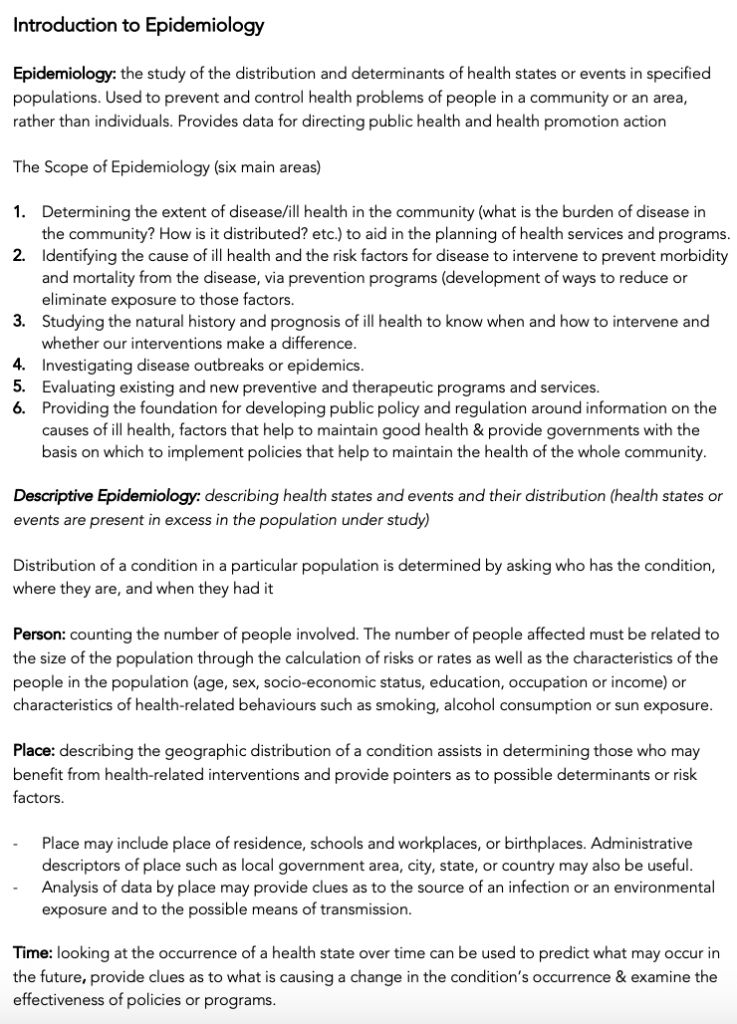HSH205 Epidemiology and Biostatistics – High Distinction
Summary:
The note titled “HSH205 Epidemiology and Biostatistics” from Deakin University offers a comprehensive exploration of key topics in epidemiology and biostatistics. The note begins with an introduction to epidemiology, providing a foundational understanding of the field. It then delves into descriptive studies, presenting methods for describing and summarizing health-related data. The note further covers analytical studies, discussing various study designs and statistical methods used in epidemiological research. Additionally, experimental studies are explored, highlighting their role in evaluating interventions and treatments. The note concludes with a section on the practical applications of epidemiology, showcasing its relevance in public health and healthcare decision-making. These comprehensive unit notes provide students at Deakin University with a valuable resource to grasp the fundamental concepts and applications of epidemiology and biostatistics.
Excerpt:
HSH205 Epidemiology and Biostatistics
Table of Contents
1. Introduction to Epidemiology…………………………………………………………………………….pg. 2 – 3
2. Descriptive Studies…………………………………………………………………………………………….pg. 4 – 6
3. Analytical Studies……………………………………………………………………………………………….pg. 6 – 9
4. Experimental Studies………………………………………………………………………………………pg. 10 – 13
5. Applications of Epidemiology…………………………………………………………………………pg. 13 – 14
Introduction to Epidemiology
Epidemiology: the study of the distribution and determinants of health states or events in specified
populations. Used to prevent and control people’s health problems in a community or an area,
rather than individuals. Provides data for directing public health and health promotion action.
The Scope of Epidemiology (six main areas)
1. Determining the extent of disease/ill health in the community (what is the burden of disease in the community? How is it distributed? etc.) to aid in the planning of health services and programs.
2. Identifying the cause of ill health and the risk factors for disease to intervene to prevent morbidity and mortality from the disease, via prevention programs (development of ways to reduce or eliminate exposure to those factors.
3. Studying the natural history and prognosis of ill health to know when and how to intervene and whether our interventions make a difference.
4. Investigating disease outbreaks or epidemics.
5. Evaluating existing and new preventive and therapeutic programs and services.
6. Providing the foundation for developing public policy and regulation around information on the causes of ill health, and factors that help to maintain good health & provide governments with the basis on which to implement policies that help to maintain the health of the whole community


Reviews